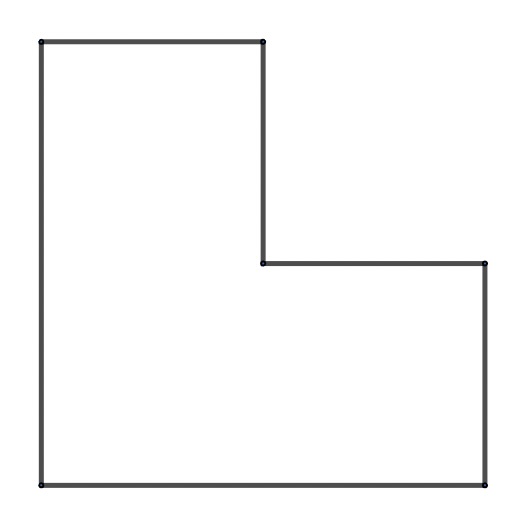BASIC LOGIC
For example, we can use 12 planks of wood for each sandbox. The problem considers only the borders so no planks are used to make the base. The borders are assumed to be of equal height and there are 4 borders to each rectangular sandbox, so, in one arrangement, 12/4=3 planks would be needed for each side. The planks could be arranged to make deep sides of height 0.9m creating a square sandbox with sides 1m long.
Experiment with different shapes. For example, 12 planks can be used to make a T-shaped sandbox 0.3m high.
A shallow-side arrangement is a height of 0.3m (1 plank) and square side length 3m (3 planks).
Rectangular arrangement: 4m (2 planks long) by 2m (1 plank long) and 0.6m high (2 planks).
Square arrangements give maximum sand area.
MATHEMATICAL LOGIC
The perimeter of a rectangle=2(L+W) where L=length and W=width.
If we have 12 units for a sandbox then 2(L+W)=12 so L+W=6. That means:
(L,W)=(5,1), (4, 2) or (3,3). That means 3 rectangular structures: 5 planks in length and one in width (height 0.3m); 4 planks in length and two in width, height 0.3m, or 2 planks in length and one in width, 2 planks in height (0.6m) all round; 3 planks in length and width, height 0.3m, or 3 planks high and a 1 metre square.
But there are other solutions because 36 doesn't need to be split into 3 twelves.
36=4+16+16, for example. 4 planks make a 1m square sandbox 0.3m high. 16 planks can make a 7m by 1m by 0.3m rectangular sandbox; a 6m by 2m by 0.3m, or a 3m by 1m by 0.6m; a 3m by 5m by 0.3m; 4m square, 0.3m high; 2m by 2m by 0.6m; 1m by 1m by 1.2m.
36=4+12+20: 1m square sandbox 0.3m high; (see earlier for using 12 planks); 4m×1m×0.3m; 2m×3m×0.3m.
36=4+4+28, 4+8+24, 4+12+20, 4+16+16, 8+8+20, 8+12+16, 12+12+12. Each of the divisions into groups of planks (each group a multiple of 4 so that we can make 4 sides of at least one plank per side) allows the construction of a rectangular or square sandbox.
It doesn't end there. We can make a sandbox shape made up of various rectangles. This would produce sandboxes with more than 4 sides:

This shape would use 8 planks and have a height of 0.3m. That would leave 28 planks to make other shapes. The same shape could use 16 planks and be 0.6m high, leaving 20 planks to make 2 more sandboxes. This problem was designed to get you to use your imagination and apply simple mathematics to design sandboxes.